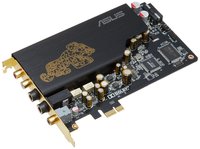BulletDust
Supreme [H]ardness
- Joined
- Feb 17, 2016
- Messages
- 6,057
Audio in general went down with the introduction of MP3. Most people thought is was cooler to have an ipod stuffed with 10,000 songs of crappy quality then 'only' 1000 songs of good quality audio. I never considered myself an audiophile, but somewhere in that narrow valley between utter crap and ultra high-end. Many of my friends back in the day burned MP3 audio CDs with 100 songs on them, and I couldn't stand it. I had to have actual CDs played through my aftermarket midgrade car audio system. I can also remember buying a $200 Sony 5.1 surround system when I was 16 that always blew my friends away. The opening sequence of Gladiator was amazing. Even then, I see very few of my friends with anything but the TV speakers being used with their new 1080p/4k tvs all these years later.
Audio has been in a black hole for the last 15 years I would say. The problem is, unlike video, audio quality is hard to quantify. Everybody KNOWS a 1080p tv is better than a 480i TV. You also have things like screenshots and Best Buy displays. Sure, audio has things like dB SNR, but since it is logarithmic, the average person doesn't understand what a huge difference there is between 90 dB and 110 dB. "Why should I pay 50% more for a slight increase." Perhaps if they converted it to watts, people would wrap their heads around it better. Other specs like 24-bit audio are never sexy either. Also, marketing blemishes like Monster cable (and Best Buy!) trying to sell them $100 RCA cables while optical cables had been out for some time, left people all kinds of confused on where to spend their hard earned dollar. I could go on and on about why audio continues to fail against video/picture.
Photography saw a degradation with the number of megapixel wars but it only lasted a short while when people actually started to care about the quality of the pixels. Maybe VR will cause people to wise up in regards to audio as well.
I remember reading that a 128kbps MP3 was the equivalent of CD quality, my ass it is! I can even hear the low bitrate audio being played on the radio these days.
![[H]ard|Forum](/styles/hardforum/xenforo/logo_dark.png)
